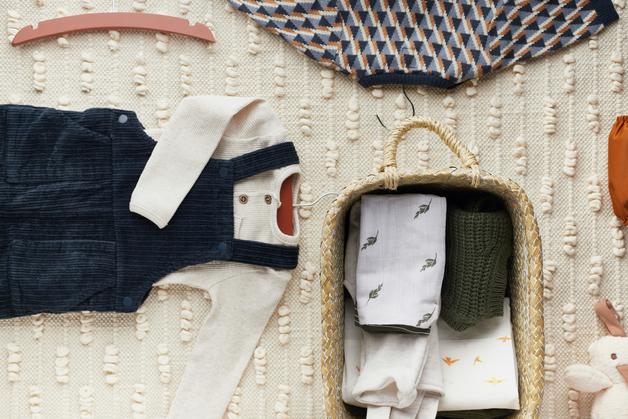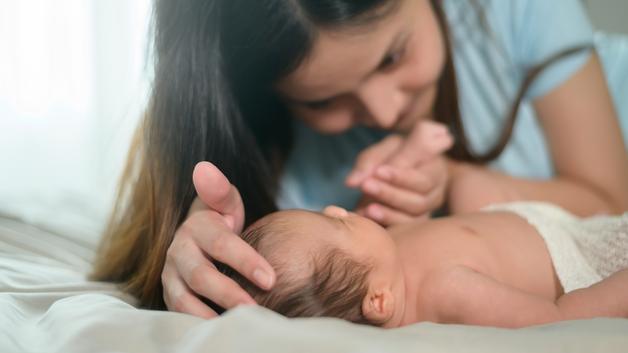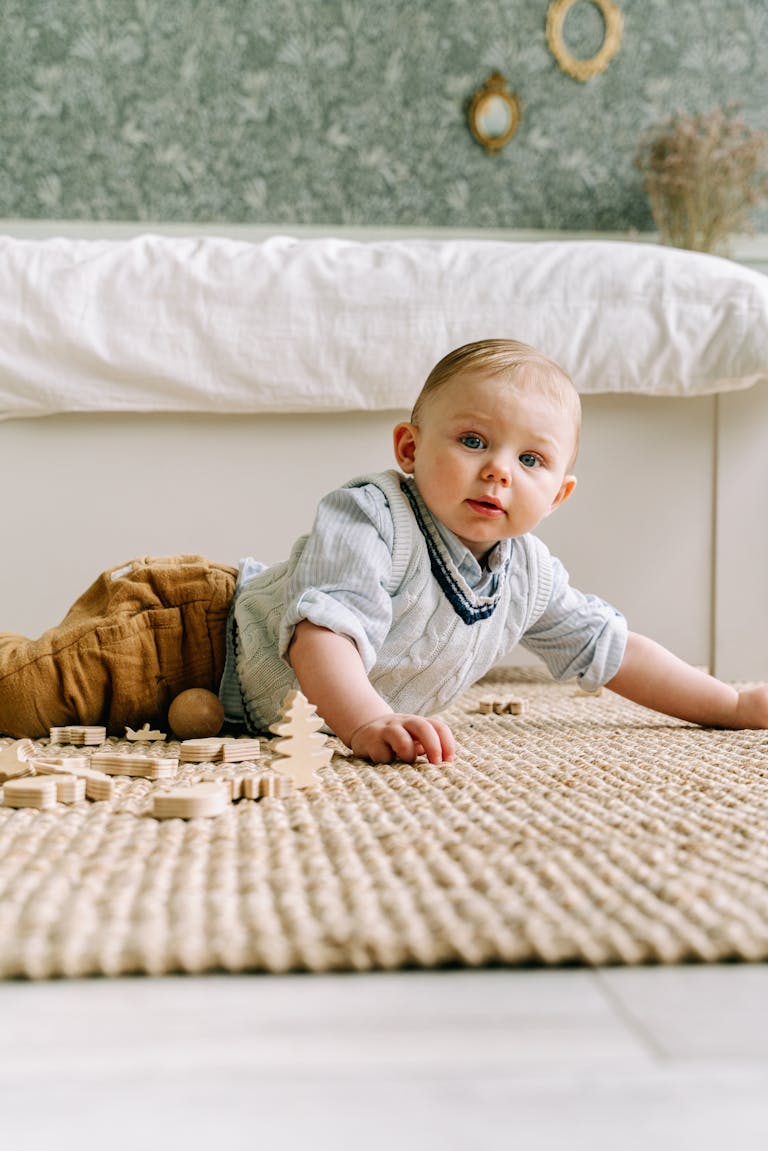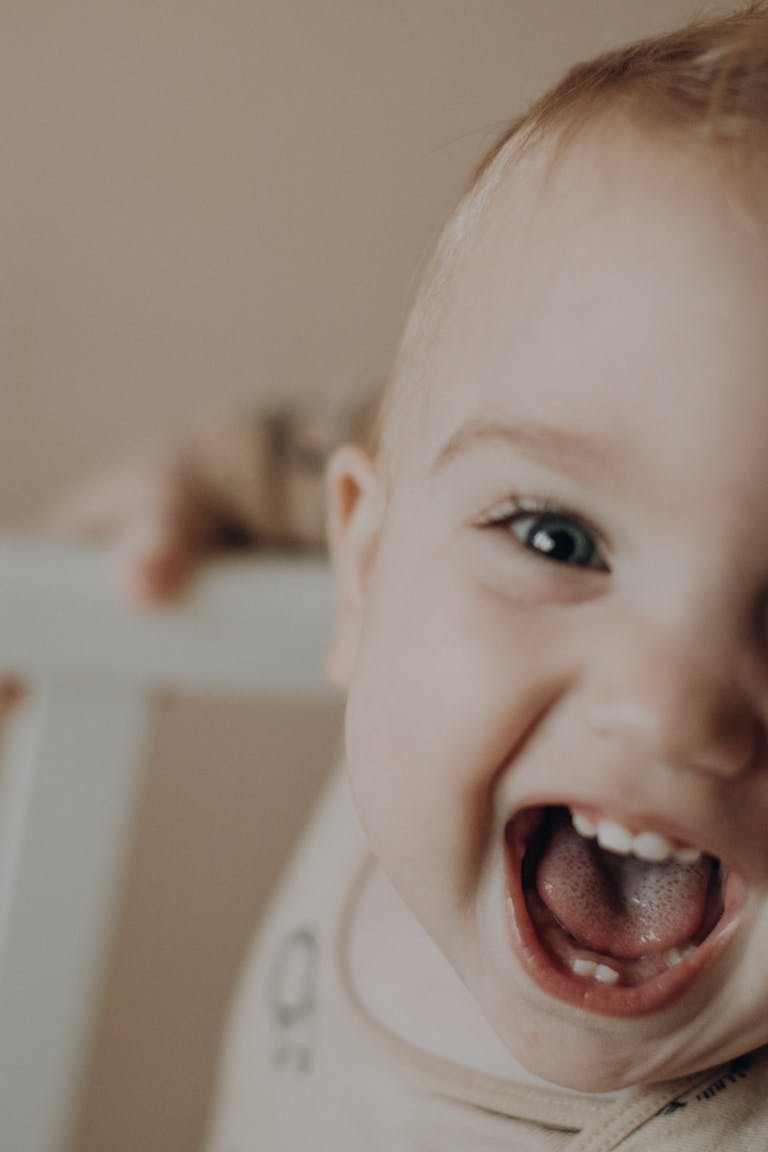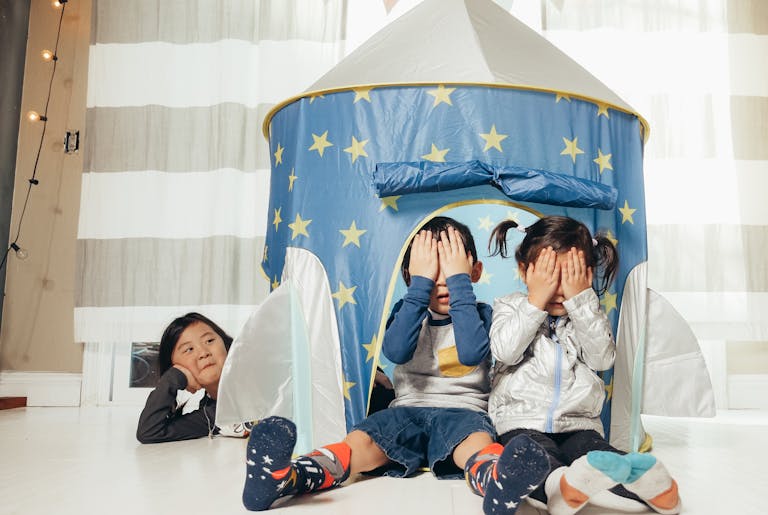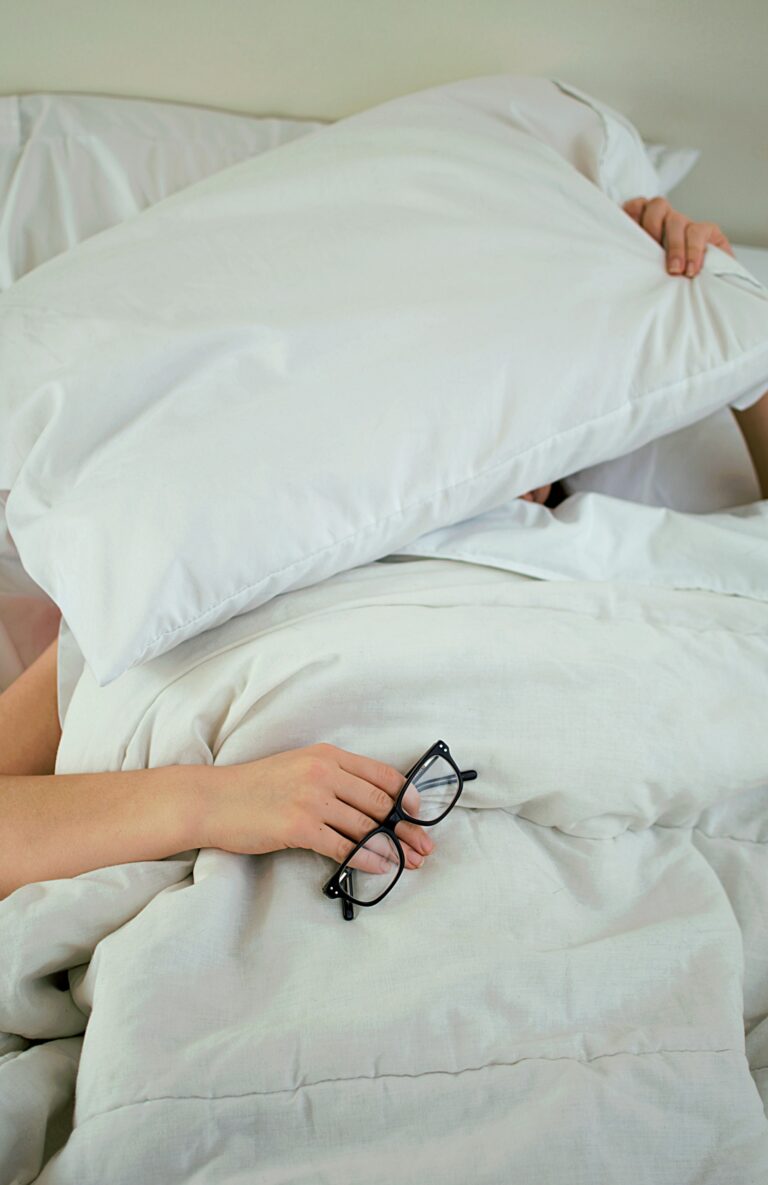A question lingers in the mind of nearly every parent: How should I dress my baby at night for peaceful, uninterrupted sleep? It’s not just about picking a cute bodysuit or matching pajamas—dressing baby at night becomes a dance between temperature regulation, comfort, and the constant drive to keep your little one safe. Worries spike during those uncertain hours—will your baby be too warm, too cold, or restless from discomfort? Science, instinct, and a dash of trial and error all intersect here. This exploration offers clear strategies for dressing baby at night, dives into medical reasoning behind the recommendations, and addresses practical dilemmas so familiar to parents everywhere: layers, room climate, sleep safety, and, always, how to interpret those subtle signals from a child who cannot yet tell you what they need.
Why Dressing Baby at Night Demands Thought: Physiology, Comfort, and SIDS Prevention
At first glance, wrapping your baby in soft clothes for sleep seems simple. Yet, underneath those layers lies a tangle of physiology. Newborns, for instance, grapple with incomplete thermoregulation—the body’s natural mechanism for maintaining optimal temperature is immature, unstable, unpredictable. This is why pediatricians emphasize not just warmth, but balance. Overheating—a recognized risk factor for Sudden Infant Death Syndrome (SIDS)—can result from excessive clothes or heavy covers, while chills disrupt sleep cycles and provoke fussiness.
Soft, breathable materials such as cotton sleepwear are strongly advised: these mitigate both heat and moisture build-up, working in tandem with the baby’s still-developing skin and sweat glands. Well-fitted pajamas or a sleep sack (an enclosed, wearable blanket) stand out for their dual promise—warmth without the suffocation hazard posed by loose bedding.
But how can you really know if you’ve struck the right balance when dressing baby at night? Forget frozen feet and tiny, icy hands—those extremities are misleading, due to the baby’s naturally fluctuating peripheral circulation. Instead, check your baby’s core temperature: the back of the neck or chest, ideally warm and dry, is the reliable zone for assessment. If damp or hot here, a layer must go. If unusually cool, add one. Science meets intuition in these midnight adjustments.
Adapting Layers to Room Temperature: Practical Scenarios and TOG Ratings
Dressing Baby at Night in Mild Temperatures (68–72°F / 20–22°C)
In temperate nurseries—think 68 to 72°F—less is more. Start with a long-sleeved bodysuit (cotton, always), add light pajamas, and finish with a lightweight sleep sack rated TOG 1.0 or 2.0 (TOG, short for “thermal overall grade,” quantifies warmth). This configuration keeps infants cozy, not sweltering, and eliminates the need for traditional blankets, which are best avoided for infants under 12 months.
Extra Warmth for Cooler Rooms (Below 64°F / 18°C)
If you’re facing a chilly room at night, layering demands more nuance. Combine a long-sleeved cotton bodysuit, a soft fleece or velour sleeper, and a thicker sleep sack, with carefully chosen footed pajamas or socks (snug enough to stay put, not loose in the crib). Avoid synthetics that may trap heat and moisture, potentially irritating delicate skin. Flip the script during summer: a simple short-sleeved bodysuit and a thin, breathable sleep sack (TOG 0.5) will suffice, even for babies who kick off every layer.
Ups and Downs: Adapting in Spring and Fall
Seasonal transitions create fickle habitats. A medium-weight sleep sack (TOG 1.0–2.5) layered over a basic cotton bodysuit adapts well as temperatures fluctuate. Keep extra layers on hand, but resist the urge to bundle excessively—frequent wake-ups or sweat-damp skin signal time to pare back.
The Science of Safety: Accessories and Sleep Environment
Lists and routines rarely survive contact with a real, wiggly baby, so let’s look at the environment itself. Pediatric sleep specialists recommend a firm, well-fitting crib mattress without soft bedding—pillows, bumper pads, and, yes, any sort of cushion should be kept outside the sleep surface. A snug fitted sheet on the mattress, plus a thin waterproof layer for leaks, both reduce accidental suffocation or excessive sweating. Avoid hats, scarves, or any loose accessories entirely, as the risk of overheating or airway obstruction far outweighs any possible benefit.
What about a humidifier or blackout curtains? These, when used correctly, foster a consistent climate, shield from dramatic temperature swings, and prevent the dry air that can irritate little noses and throats. Air the nursery regularly for freshness—environment and attire go hand-in-hand when dressing baby at night.
Beyond the Basics: Development, Illness, and Special Considerations
As babies grow—and especially once they start rolling—the rules shift. Swaddling, which calms newborns and staves off startle reflexes, must end around four months or with any evidence of rolling (whichever comes first). Continued swaddling past this milestone interrupts natural development and increases SIDS risk. Transition immediately to a wearable sleep sack, which allows more freedom of movement but maintains the safety of a blanket alternative.
During illness or fever, resist layering in response to parental worry. Clinicians recommend light, breathable clothing and careful monitoring of room climate—over-bundling a febrile baby can push body temperature higher, which is neither comforting nor safe.
How Many Layers? Parsing the “Just Right” Metric
Medical guidance condenses choices into one simple rule: dress your baby in one more layer than you would wear, given the same room conditions. This metric accommodates natural parental variation without requiring thermometers at every turn. What matters most is the combination: breathable fabrics, well-fitted garments, and layers you can add or remove with minimal disruption, especially during those 2 AM feedings or unexpected wake-ups.
Want a simple checklist? Watch for these cues:
- Overheating: Baby’s neck/clothes sweaty, flushed cheeks, irritable or restless sleep.
- Too cold: Torso cool, constant waking, fussy or shivering (rare but possible).
Remember: hands and feet run cooler—unless the core itself is cold, resist layering up.
Material Matters: Cotton, Bamboo, and Hazards to Dodge
Pediatric dermatology emphasizes the value of cotton: it’s tactile, easy on sensitive skin, hypoallergenic, and incredibly absorbent. Bamboo fabric, where available, shares these virtues. Hazardous choices—synthetic fibers, decorative additions like buttons or ties—can contribute to overheating, skin irritation, or safety threats in the crib. Clothes should be easy to wash, quick to dry, and never impede quick nighttime changes.
Swaddling, Sleep Sacks, and When to Use Blankets
Swaddling: The Early Months
Newborn swaddling can entice longer, quieter sleep by limiting the “startle” reflex (technically, Moro reflex). Use only a thin, breathable swaddle blanket, no forgiving on snugness at the hips. Once rolling enters the picture, discontinue swaddling immediately.
Sleep Sacks: The Trusty Standby
A wearable blanket—the modern sleep sack—mitigates SIDS risk by keeping extra bedding out of the crib and warmth confined to the body (not the head or face). Look for the right size, ensure ease of movement, and use only one sleep sack at a time. Avoid anything weighted or restrictive.
Introducing Blankets
Blankets—with all their legacy charm—belong only to babies over 12 months who can confidently reposition themselves. Even then, only lightweight materials, tucked no higher than chest level, should be used. Before this milestone, stick exclusively to the sleep sack.
Nighttime Routines: Efficiency and Quick Solutions for Disrupted Sleep
No one has ever described overnight parenting as straightforward. Select pajamas or sleepwear with zippers or snaps for rapid changes—anything that spares you and your baby unnecessary awakenings deserves its place in the night rotation. Stash spare outfits nearby, opt for removable layers, and adjust promptly at the first hint of discomfort, whether sweat or shivers. Fuss-free options translate into less interrupted bedtimes, sometimes the difference between a full sleep cycle and a night of pacing the hallway.
Monitoring and Adjusting as Your Baby Grows
Perhaps nothing in parenthood prompts more second-guessing than dressing baby at night. The trick is this: observe, adapt, and allow for everything to change. The right setup in July could prove wholly inadequate by November. Periodically re-evaluate the nursery climate and your baby’s developmental milestones. Allow for shifting sleep routines and always—always—trust the feedback drawn from your baby’s behavior, not just what friends or search engines might suggest.
Key Takeaways
- Dressing baby at night should involve soft, breathable fabrics, fitted layers, and no loose accessories in the crib.
- Match your baby’s nightwear to the nursery setting: one more layer than you’d wear yourself is a pragmatic standard.
- Use sleep sacks or, for newborns, swaddles—only until rolling starts—and steer clear of blankets during the first year, for maximal safety.
- Monitor by checking the core temperature at the neck or chest, not the extremities, and be ready to adjust whenever your baby’s signals change.
- Prioritize a safe sleep environment: fitted sheets, firm mattress, no loose bedding or toys.
- Lean on structured bedtime routines and adapt as your baby grows.
- Whenever in doubt or faced with persistent difficulties, reach out to pediatric healthcare providers—for nuanced guidance tailored to your child’s unique needs.
For parents seeking tailored guidance and reassurance, resources exist. Download the Heloa app for free personalized parenting tips and child health questionnaires—empowering you with information, adapting with your family as your child grows.
Questions Parents Ask
How can I dress my baby at night when the temperature changes throughout the night?
It can be challenging when the nursery temperature rises and falls. In these situations, dressing your baby in easy-to-layer outfits makes sense. Opt for a light cotton bodysuit as a base, then add a soft sleep sack or a light pajama. If you expect significant temperature shifts overnight, have an extra layer nearby—like a lightweight cardigan or a medium-weight sleep sack. If you check on your baby and notice they feel cooler or warmer than before, you can remove or add a layer. Remember, flexibility is key, and adjusting clothing as the night goes on is completely normal and even encouraged.
What should I do if I need to change my baby’s clothes during the night?
Sometimes, a diaper leak or spit-up makes a nighttime outfit change necessary. To make this process smooth and minimize disruption, choose sleepwear with zippers or snaps that are easy to open. Keep spare pajamas and bodysuits within reach, so you don’t have to search in the dark. Try to keep lights low and speak softly—this helps your baby return to sleep more easily after you’re done. Remember, it’s normal if your baby wakes or fusses during changes; patience and gentle handling are your best allies.
Is it safe to use clothing with decorations or embellishments for my baby at night?
For nighttime, it’s preferable to avoid pajamas or bodysuits with decorations like ribbons, buttons, or sequins. These additions, while pretty, could irritate your baby’s sensitive skin or even pose a small risk if they come loose. Instead, favor smooth, simple sleepwear made of cotton or other gentle fabrics. This helps keep your baby comfortable, safe, and free from unnecessary distractions during sleep. Rest assured, there are plenty of cute, safe options tailored for your little one’s comfort.

Further reading:

